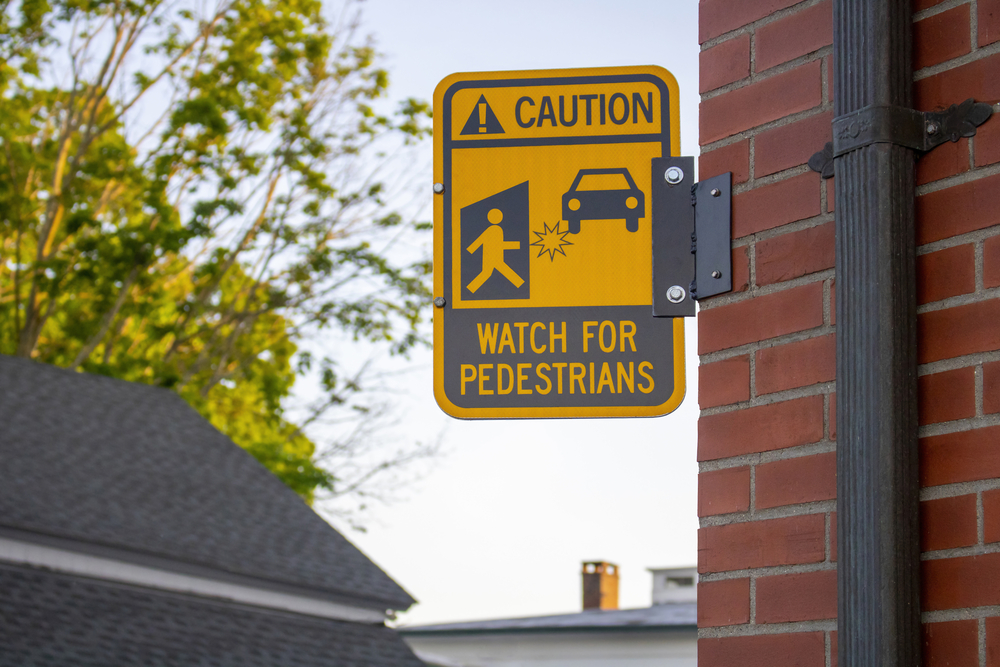In recent years, many Indiana cities have made traveling more accessible to pedestrians. Although there are many advantages to walking instead of driving, there’s been a notable increase in pedestrian accidents because of the increased foot traffic.
These accidents are on the rise both in Indiana and nationwide. The advocacy group Smart Growth America stated that the number of pedestrians killed in traffic accidents has increased by 35% in the last decade. Additionally, the Indiana University Public Policy Institute stated that there were 1,650 Indiana pedestrian accidents in 2018 alone, and 114 pedestrians were killed in traffic accidents.
Although pedestrians are at a much greater risk of suffering from serious injury or death after an accident, they may be partially or wholly liable for the wreck. Both drivers and pedestrians are required to follow state traffic laws, so if a pedestrian violates a law, they could be liable.
Here’s what you need to know about pedestrian laws and liability in Indiana.
Pedestrian and Driver Laws in Indiana
Pedestrians must abide by traffic laws outlined in Title 9 of the Indiana Code. The laws include:
- Pedestrians must obey traffic control devices — such as crosswalk signals — unless a police officer directs otherwise.
- Pedestrians must use sidewalks when they’re available.
- Pedestrians may not suddenly enter the path of an approaching vehicle.
- Pedestrians are not allowed to cross an intersection diagonally unless a traffic control device states that they can.
- Pedestrians may not hitchhike.
- Pedestrians must yield to vehicles if they’re walking on the road outside of a crosswalk.
- Pedestrians may not solicit business from drivers.
Although pedestrians are obligated to use crosswalks when they’re available, Indiana does NOT have a state law stating that pedestrians can only cross via crosswalks. Whether or not a pedestrian may cross without an available crosswalk depends on local ordinances.
When Is a Pedestrian Liable for an Accident?
There are many situations in which a pedestrian may be partially or wholly liable for an accident. Some of these situations include:
- The walker broke a pedestrian law.
- The pedestrian was under the influence of drugs or alcohol.
- The pedestrian walked along the road instead of using a sidewalk or shoulder.
- The pedestrian walked while texting or engaging in another distraction.
- The pedestrian ignored traffic control devices.
- The pedestrian walked on the road at night or in bad weather.
- The pedestrian jaywalked.
Determining Liability After a Pedestrian Accident
When a driver or a pedestrian files a claim after a traffic accident, they’ll need to present evidence indicating the other party was liable. Plaintiffs — meaning the person filing the claim — need to prove that the defendant — meaning the person the plaintiff files against — caused the accident and their injuries.
There are four elements of negligence you need to prove when filing a personal injury claim:
The Defendant Owed the Plaintiff a Legal Duty
Both drivers and pedestrians owe a duty to others on the road to ensure their safety. Drivers have a duty to operate their vehicles in a safe manner and abide by traffic laws, and pedestrians owe a duty to others to walk safely and follow pedestrian laws.
The Defendant Breached that Duty
When a person breaches their duty to others, they could cause a serious traffic accident. For example, if a driver operates their vehicle while under the influence of alcohol, they breached their duty to others on the road because driving under the influence is highly dangerous.
Pedestrians can also breach their duty to others. For example, if a pedestrian walks outside of a crosswalk while distracted, they may enter the path of an oncoming car, leading to a serious accident.
The Breach of Duty Caused the Accident
Plaintiffs need to prove more than the defendant’s breach of duty — they also need to prove that the breach directly caused the accident and injuries.
For example, it takes more than proving that a driver operated their vehicle over the speed limit to win a personal injury case. The injured party would also need to prove that the driver’s speeding caused the wreck.
The Accident Caused the Plaintiff to Sustain Injuries
In addition to proving that the defendant is liable, the plaintiff must also provide sufficient evidence that the accident resulted in damages. Damages may include the amount of money the plaintiff lost due to their injuries, such as compensation for medical bills and lost wages, or noneconomic damages, such as pain and suffering.
Modified Comparative Negligence
Additionally, those filing personal injury claims in Indiana need to know that our state uses a modified comparative negligence system. When people are involved in a pedestrian accident or another type of accident, multiple parties may be liable, and the liable parties will share a percentage of the blame.
In a pedestrian accident, both the walker and the driver may share some of the blame. If a pedestrian walks out into the middle of the road and the driver was speeding at the time, the pedestrian could be found 70% liable while the driver is 30% liable. This percentage directly impacts the amount of money someone can recover in a personal injury claim. If the driver filed a personal injury claim against the pedestrian, the amount they can recover in damages is 30% less than what it would be if the pedestrian were wholly liable.
With a modified comparative negligence system, those filing a personal injury claim must not be more than 51% responsible for the traffic accident. If you’re over 51% liable, you cannot recover compensation for property damage and personal injuries.
Contact an Indianapolis Pedestrian Accident Lawyer
Whether you’re an injured driver or pedestrian, you need legal experts at your side to help prove your personal injury claim. For expert Indianapolis pedestrian accident attorneys, contact the Flores Law Group at 317-900-2556.

